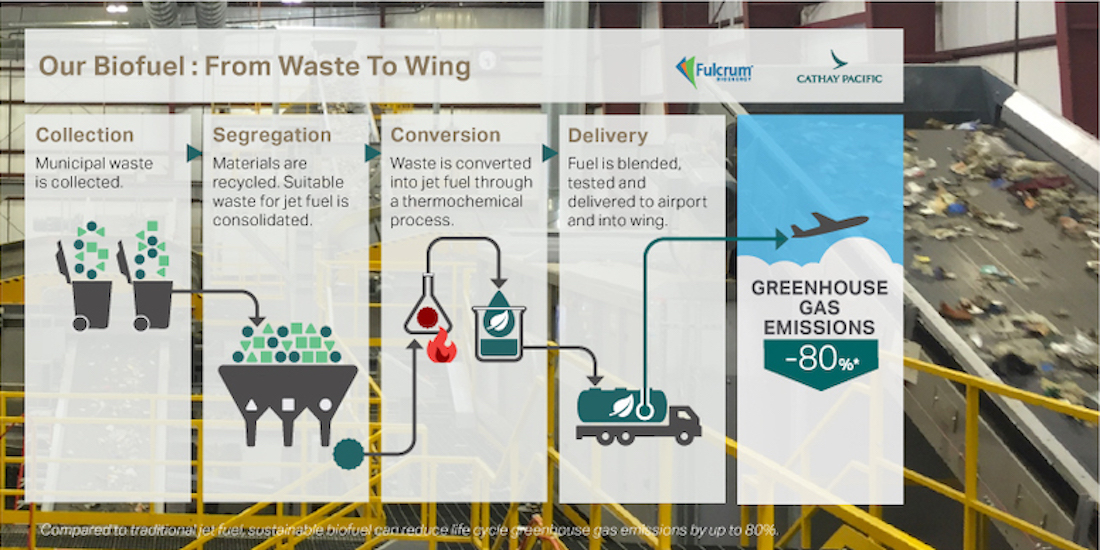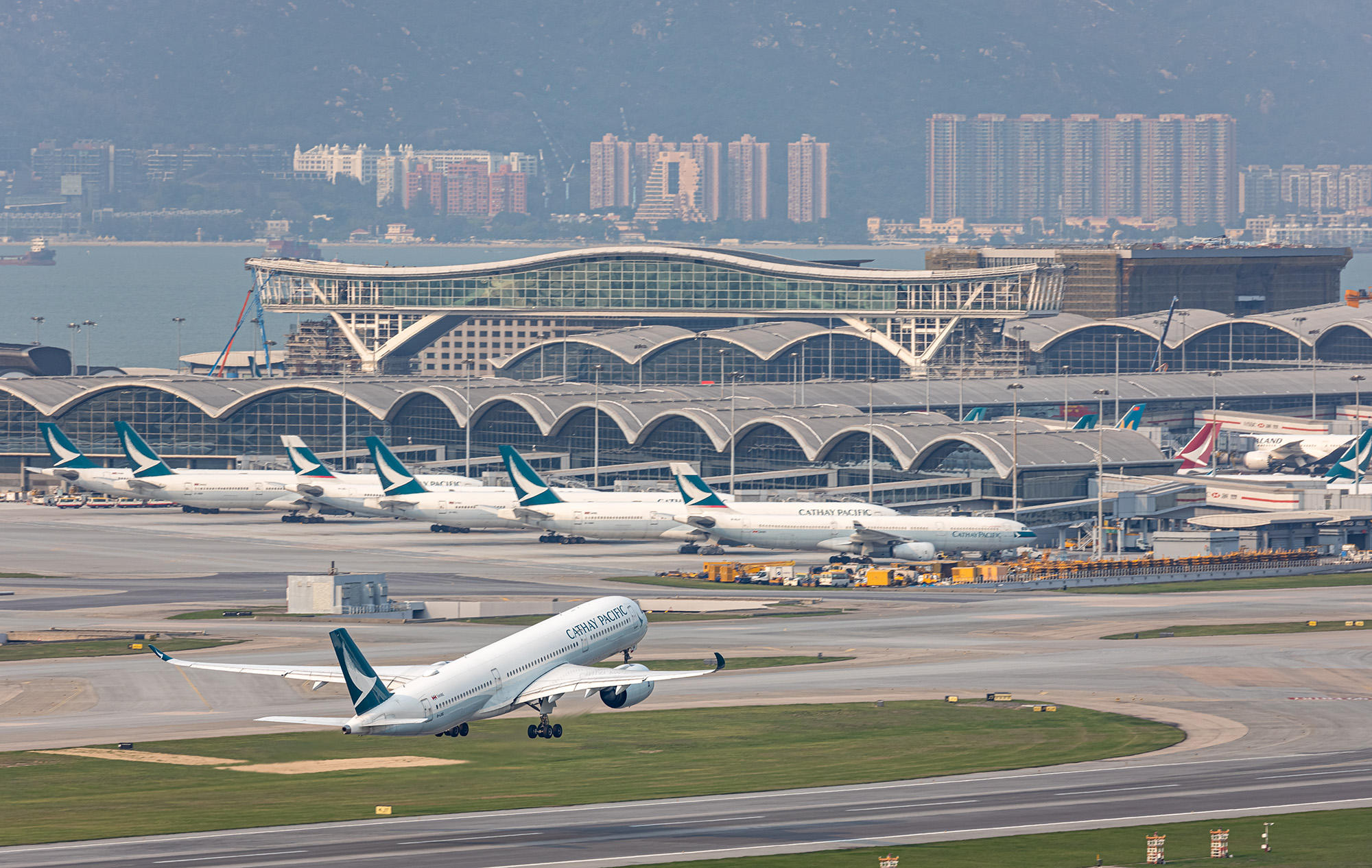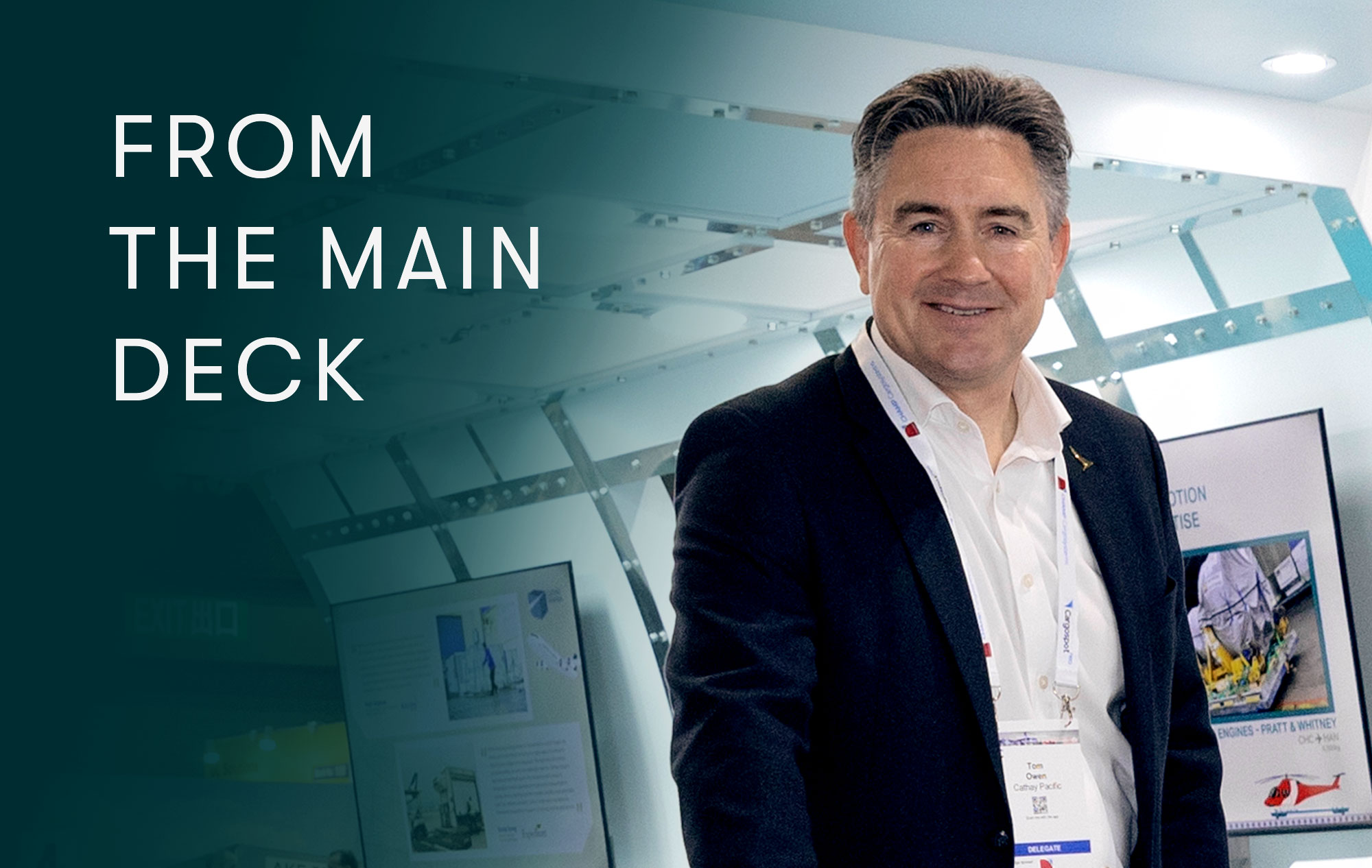Sustainability is a topic of ever-increasing importance as people around the world come to realise that the environment needs more protection to ensure its long-term survival. This has been a consumer-led trend but has also recently taken hold in the corporate world.
Big businesses understand that they must address climate change, responding not only to pressure from consumers but also from shareholders in the investment market. This is because people need to feel good about the goods they buy – and what they invest in – from a social and environmental perspective. Cyrus Taraporevala, President and CEO of investment firm State Street Global Advisors, said in a recent issue of Harvard Business Review: ‘ESG [environmental, social and governance] issues have become much more important for us as long-term investors.’

For airlines, this creates an immediate and obvious challenge, and also indirectly impacts companies that use aviation as part of their supply chain. Jet fuel is a limited resource, and each tonne burned creates a tonne of CO2 emissions – one of the major contributors to climate change. Last year, Cathay Pacific Group aircraft generated 18 million tonnes of CO2 emissions.
Currently, aviation is only responsible for between two and three per cent of emissions worldwide, but that share is set to grow as the industry expands, particularly in Asia. The aviation sector is establishing targets to combat climate change, led by the following initiatives:
- Achieve carbon-neutral growth from 2020 through capping of net emissions
- By 2050, lower net emissions to 50 per cent of the levels recorded in 2005
Progress is already being made. For example, each new generation of aircraft being made – such as Cathay Pacific’s Airbus A350 – offer fuel economy savings of 15 to 20 per cent over the aircraft they replace. Cathay Pacific Climate Change and Biofuel Manager Yee Chow says: ‘We have reduced fuel use on a unit basis by 28 per cent since 1998, through the introduction of new fuel-efficient aircraft and other operational improvements.’
However, with the number of air passengers set to double by 2035 and significant advancements still to be seen in developing electrically powered aircraft, Chow says there is ‘a widening gap that current technology can’t yet close.’
Airlines will establish carbon emissions targets from 2020, with a two-pronged strategy: developing sustainable aviation fuel (SAF) such as biofuel, and buying carbon credits at an airline level to offset emissions that go beyond the agreed cap.
Cathay Pacific has been addressing this since 2008, when it first got involved in developing a global plan to regulate airline emissions. The new regulation – CORSIA (Carbon Offsetting and Reduction Scheme for International Aviation) – will effectively cap international aviation’s carbon emissions growth at 2020 levels, with any additional growth being compensated by the purchase of carbon credits.
Sustainable aviation fuel
Biofuel is derived from organic matter such as vegetable oils and household waste. Chow says: ‘We have strong commitment from Cathay Pacific leadership to expand the use of biofuel.’
Cathay Pacific uses a measure of biofuel derived from sugar cane when it flies new Airbus aircraft from the factory in Toulouse, France, to Hong Kong. The issue is scaling up production of such fuel while adhering to stringent rules about not disrupting the environment or replacing food crops.
But there is another alternative. Cathay Pacific has invested in Fulcrum Bioenergy, a US company that aims to create aviation fuel from household waste, which offers an additional green benefit of keeping more material out of landfills.
In the coming months, Fulcrum will open its first plant in Nevada to produce a synthetic crude oil made out of waste, which can then be refined into diesel. Chow says: ‘Jet fuel is still some way off, but Fulcrum is building a bigger plant near Chicago that will produce the fuel we need.’
It’s an ingenious process. The plant receives tonnes of household waste each day. The waste size is reduced, separating the inorganic waste which can’t be converted to fuel, as well as separating recyclable metals and plastics that can be sold on to recycling companies. The resulting material is then put into contact with high-pressure steam to create a ‘syngas’ made up of molecules of hydrogen, carbon monoxide and carbon dioxide. The gas gets refined into a liquid ‘Syncrude’ that can then be further refined into jet fuel, diesel and a thicker residue suitable for fuelling ships. Unlike fossil fuels, all these fuels are sulphur-free and do not contain metals.
Carbon offsetting
Cathay Pacific also offers a scheme to passengers for offsetting their personal and business travel, called Fly Greener. It enables passengers to calculate and pay a fee to make up for the carbon emissions generated from their air travel. It’s a surprisingly inexpensive way to contribute to zero carbon growth – for example, it costs around HK$15 to offset a flight between Hong Kong and Singapore.
Fly Greener is a carbon credit scheme, with fees paid by passengers supporting Cathay Pacific’s purchase of credits for projects that reduce carbon emissions and bring a social benefit. The airline’s current projects include a project in India to create clean biogas from organic food waste, and a project in Bangladesh to manufacture cleaner cooking stoves that provide employment, cleaner air and health benefits.
Fly Greener is used frequently by Cathay Pacific’s business travellers. Chow says: ‘There is increased awareness about climate change, and we have seen this converted to interest, particularly at the corporate level.’
Many of these corporate clients are beholden to their shareholders to demonstrate a commitment to sustainability. And Cathay Pacific is pleased to do its bit to help.
For more on the Cathay Pacific Group’s sustainability journey, download the Sustainable Development Report 2018, which includes details about the company’s community work, waste-reduction initiatives and Sustainable Development Cargo Carriage Policy.









